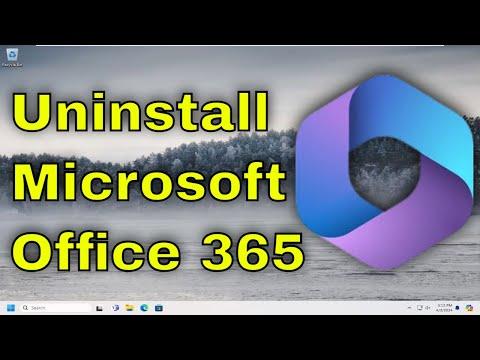I had been using Microsoft Office 365 for a while, but recently, I decided it was time to part ways with it. The decision was not made lightly; there were several reasons behind it. Perhaps the most significant factor was that I was shifting to a different office suite that better suited my current needs. Additionally, I wanted to free up some disk space on my computer and simplify my software environment. However, uninstalling Office 365 from Windows 11 proved to be a bit more challenging than I had anticipated.
It all started when I tried to use the built-in uninstall feature in Windows 11. I opened the Settings app, navigated to “Apps,” and then to “Apps & features,” where I located Microsoft Office 365 in the list. I clicked on it, selected “Uninstall,” and followed the prompts. To my surprise, the process didn’t complete successfully. Instead, I was met with error messages and a persistent reminder that Office 365 was still installed on my system.
Frustrated but determined, I decided to explore alternative methods to remove Office 365. My first step was to use the Microsoft Support and Recovery Assistant. This tool is designed to help with various Office-related issues, including uninstallation problems. I downloaded the tool from Microsoft’s official website and ran it. After a series of prompts and diagnostic checks, it identified that the Office installation was indeed corrupt and needed to be repaired or removed. Following the tool’s recommendations, I opted for the removal process.
The Microsoft Support and Recovery Assistant took care of most of the heavy lifting, but the removal wasn’t entirely flawless. After the process finished, I noticed remnants of Office 365 still lingering on my computer. I could see traces of it in the Program Files folder and a few registry entries that were not cleaned up. Determined to leave no stone unturned, I decided to manually remove these leftovers.
To begin with, I accessed the Program Files directory on my C: drive. I navigated to “Program Files” and “Program Files (x86),” looking for any folders associated with Microsoft Office. Sure enough, I found the Office folder in both directories. I deleted these folders manually, but I knew this was only part of the solution.
Next, I turned my attention to the Windows Registry. I was cautious about editing the registry, given its critical role in the operating system’s functionality. I opened the Registry Editor by typing “regedit” in the Start menu search bar and pressing Enter. Once inside, I searched for entries related to Microsoft Office. This involved navigating through various registry keys and carefully deleting any entries associated with Office 365.
I also used the built-in Disk Cleanup tool to remove any residual files and temporary data related to Office. I accessed Disk Cleanup by searching for it in the Start menu and selecting the drive I wanted to clean. After scanning for system files and other junk, I made sure to check the box for temporary files and system files that might be associated with Office 365.
After performing these steps, I restarted my computer to ensure all changes took effect. Upon rebooting, I checked to confirm that Microsoft Office 365 was no longer present on my system. To my relief, the software was completely gone, and my computer’s performance seemed a bit smoother as a result.
While the process of uninstalling Microsoft Office 365 from Windows 11 was more involved than I had initially expected, I learned several valuable lessons. The built-in uninstaller often works well but can sometimes leave behind remnants that need to be cleaned up manually. Tools like the Microsoft Support and Recovery Assistant can be incredibly helpful for resolving uninstallation issues, but they might not always be a complete solution on their own.
Manual cleanup of residual files and registry entries, while risky, can be necessary for a thorough removal. It’s crucial to proceed with caution when editing the registry to avoid inadvertently causing system issues. Additionally, using Disk Cleanup can help ensure that no temporary files are left behind.
Overall, the experience taught me the importance of being prepared for unexpected challenges during software removal and the value of having multiple approaches at my disposal. In the future, if I find myself in a similar situation, I’ll be better equipped to handle it efficiently and effectively.
